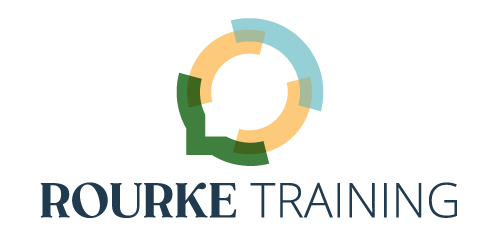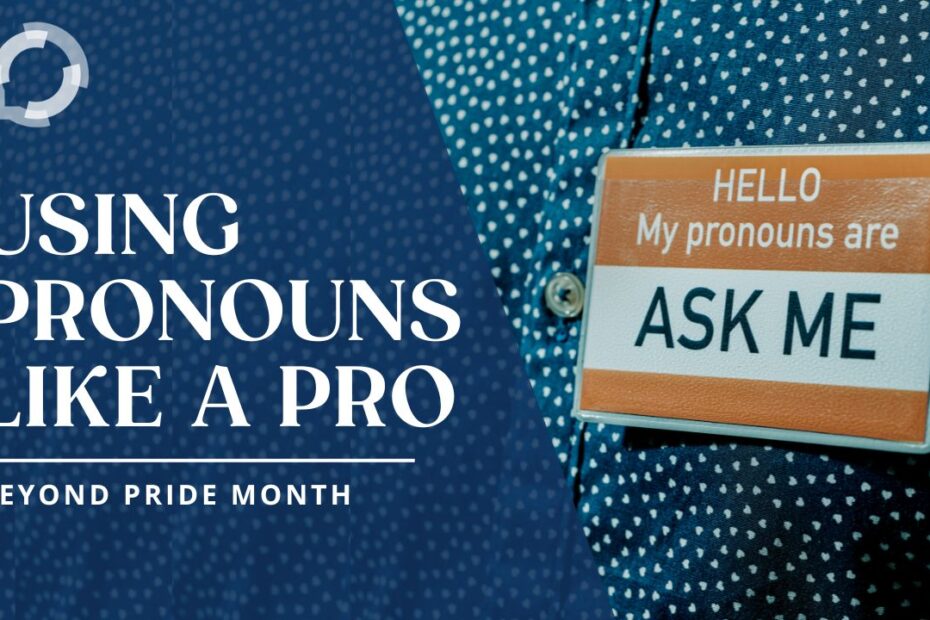For such small words, pronouns get a lot of attention.
While increasingly true year round, the prominence of pronouns is especially noticeable in June, which is Pride month in the United States and in many other countries. Pride is a time to celebrate progress in the LGBTQIA+ community, including more inclusive use of pronouns, and to galvanize work towards further social and political change.
As parades, workshops, and celebrations of all kinds wrap up this period in the national spotlight, deepen your allyship. “Ally” is a verb and needs your ongoing efforts. Don’t stash your rainbows for the next 11 months, only to dust them off next Memorial Day weekend.
Review your language habits while the inclusion and momentum of Pride month are still on your mind. How often do you ask which pronouns a new acquaintance uses? Have you updated any generic or hypothetical examples throughout your material to reflect a wider range of people and roles? Have you practiced these approaches until you’re comfortable using them smoothly?
In the same way that companies harm their reputation when they engage in rainbow-washing, that is, using rainbows in June to signal surface support for the LGBTQ+ community without doing anything substantive, performative allyship harms speakers’ and trainers’ credibility. If your audience only notices your allyship for one month a year, the effect of your actions is minimal and perhaps actively harmful.
On the other hand, consistently using person-centric language, including modeling and using accurate pronouns, is effective allyship. Aligning your language with your values is a “show, don’t tell” moment that reflects genuine respect, commitment, and support for communities that have long been – and continue to be – excluded from positions of power.
This blog is posting on June 28th, International LGBTQIA+ Pride Day, commemorating the Stonewall Uprising in 1969. If you’re used to hearing “Stonewall” followed by “Riots,” you’re standing in the intersection of language, history, power, and narrative.
That’s where pronouns are, too.
Pronouns are Identity
As SchoolHouse Rock reminds us, pronouns take the place of a noun. Merriam-Webster Dictionary’s listing for the word has a helpful breakdown of the several types of pronouns. I particularly appreciate M-W’s second definition, specifically as the way people refer to themselves. The Oxford English Dictionary goes further, noting in their second definition that people choose their pronouns (sorry, there’s no link: definitions in the OED are behind a subscription-only paywall).
One solution for avoiding the gender binary of the he/she pronouns is to use the “singular they.” Once the bane of grammar teachers, singular they is both old and new.
The OED cites a medieval romance from 1375 as the earliest written use of the term and further notes that its oral history is likely even older. Forms of address evolved, and by the 18th century, grammarians were insisting that singular they is a contradiction. This view persisted in red-ink corrections until the late 20th century.
Today, singular they is a useful way to avoid making assumptions about gender, an inclusive practice which makes spaces more comfortable for all. Major style guides, including MLA, APA, and the Associated Press, now support singular they, a strong indication that the term is here – again – to stay.
Another option that some folks have adopted for themselves is using neopronouns, completely invented terms that follow the same grammatical structure as he/him/his and she/her/hers but are entirely ungendered. One of the most common neopronouns is ze/zir, although there are a range of others. Overall, neopronouns are less common, so you’ll need to watch and listen for their use.
As with singular they, inventing neopronouns is not new. Merriam-Webster has a delightful piece on “thon,” listed in its pages from 1934 to 1961 then dropped for lack of use. Drawing on the research of Kelly Ann Sippel, the piece also includes some third person neutral singular pronouns from the past 150 years. My favorite of these is “ons,” unique rather than being a derivative of gendered pronouns or a conglomeration, such as “hem,” “heer,” or “herim.”
Tips for Speakers and Trainers
- Lead by personal example. Include your pronouns with your name, whether verbally or in writing. Email signature blocks, social media profiles, online meeting platforms, name tags at conferences, and verbal introductions are all easy and prominent places for including your pronouns and making space for others to do likewise.
- Invite others to share their pronouns, but don’t require it. Some folks are not comfortable using their nonbinary pronouns in all settings, so let them make that choice.
- Use gender-neutral phrasing when addressing a crowd or referring to a group. For example, open with “Welcome, everyone,” instead of “Welcome, ladies and gentlemen,” or refer to “young people” instead of “young men and women.”
- Never assume someone’s pronouns. If you’re not sure of which pronouns to use, listen to how the person speaks about themself or how others are speaking about them. If necessary ask, by leading with your information, “Hi, I’m Kellie. I use she/her pronouns. What are your name and pronouns?”
- Do not ask someone for their “preferred pronouns;” this is not respectful phrasing. Identity is who a person is, not a choice like which flavor of ice cream they like best.
- If you make a mistake, apologize briefly, rephrase using the correct pronouns, and move on with a clear effort to do better next time. A protracted apology puts the focus on yourself rather than the other person in the conversation, which is uncomfortable for everyone.
- Lead by organization-wide example. Advocate that all systems across your organization adopt gender-neutral and inclusive language. Examples include adding singular they or neopronouns as options in database drop-down menus, including alternate forms of address beyond “Mr.” and “Ms./Mrs.,” and using gender-neutral role descriptions like “Parent 1” and “Parent 2” instead of “Mother” and “Father” when gender is not essential information.
- Review guidelines such as these from the United Nations on using gender-neutral language so you can incorporate these changes throughout all of your material.
How About You?
How do you use pronouns, both for yourself and in groups? Does singular they seem “wrong” to you after years of grammar correction in elementary school or was yours an easy conversion? I wielded a red pen on this issue for many years early in my teaching career, but the switch was surprisingly seamless for me. Reframing my use of pronouns from a matter of grammatical correctness to one of respect for others helped a great deal.
Have you met someone who uses neopronouns or are you someone who uses them? If so, which ones?
What are other areas in which allies can further normalize use of pronouns?
Tell us about it in the comments.
Check Out Our YouTube Channel
The Rourke Training – Ongoing Mastery YouTube channel has a bit of something for everyone. Go there to get Kirsten’s take on examples of public speaking, as well as reflections on her entrepreneurial journey. The channel is also the home of the podcast Kirsten and Kellie produced for 5 years, Ongoing Mastery: Presenting & Speaking, which covers everything connected to continually improving your craft of being a public speaker, from interviews and mini-coaching sessions with guests to conversations between Kirsten and Kellie.
Come join us.
Cheers,
Kellie


